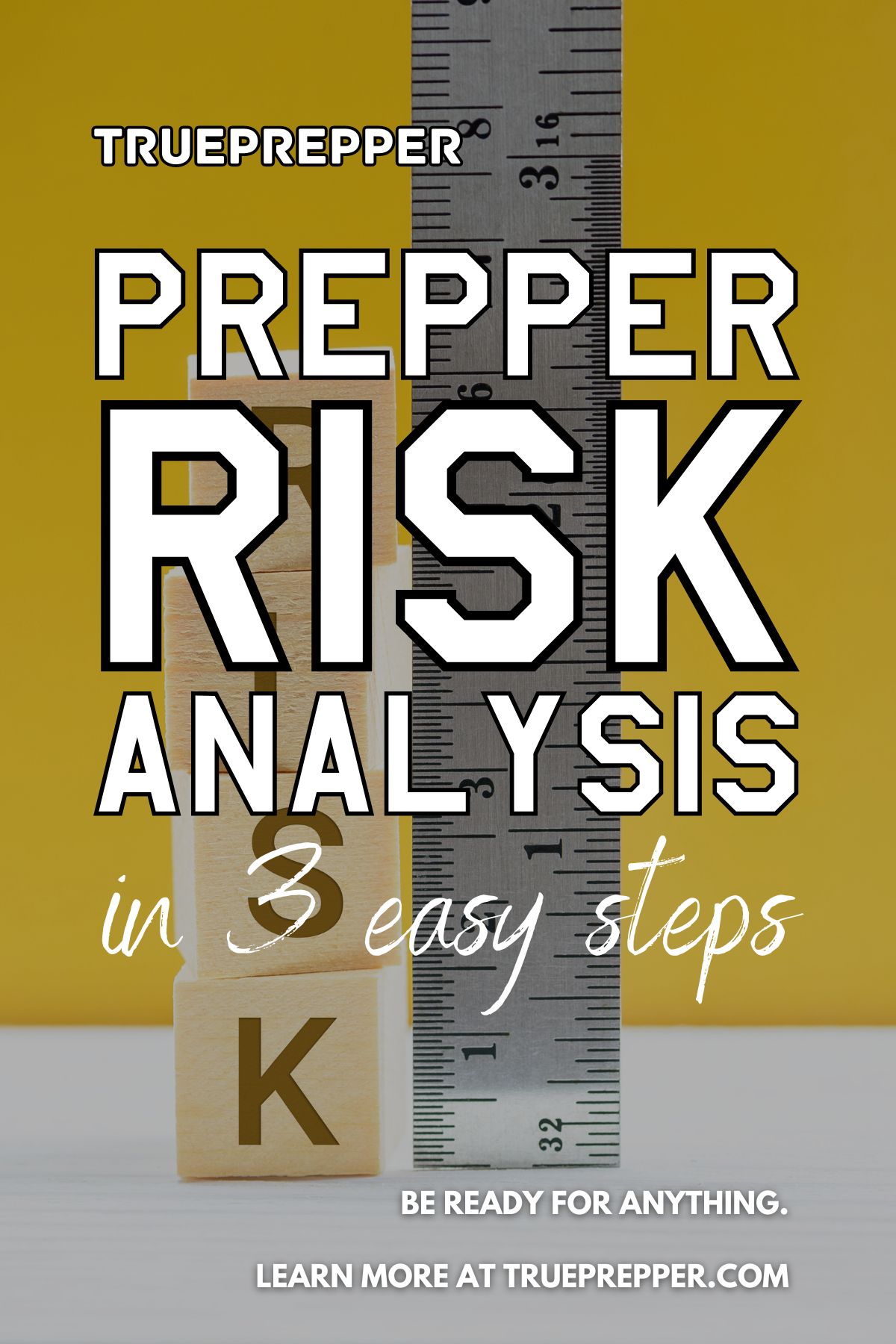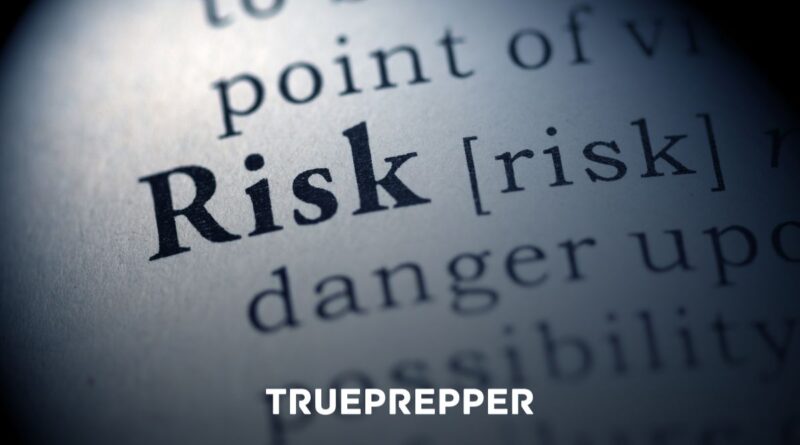Risk Analysis: The Foundation of Prepping
Welcome to our guide on risk analysis for preppers! As a foundational concept, many people don’t realize they are using risk analysis when they prepare for emergencies, or the reasoning behind why some situations are more important to prepare for.
When you understand risk itself, the rest becomes common sense. We aren’t born with an understanding of risk, but we all learn it very quickly in a way. If we see somebody fall on a bike and get injured, we understand that there is potential for injury riding a bike- and therefore risk.
Life is full of risks, and we don’t let that stop us from living it to the fullest. But we can analyze risk- from bikes to nukes – to make wiser, safer, and more prepared decisions.
Contents (Jump to a Section)
What is Risk?
Merriam-Webster has the shortest definition: possibility of loss or injury.
That definition is for the general term of ‘risk’. ‘A risk’ is something that brings the possibility of loss or injury, also known as a hazard.
In scientific risk analysis terms, the risk wording is adjusted to two segments that can be measured:
- possibility is called probability.
- loss or injury is called impact.
You’ll see those terms a lot as we go through different scenarios and the basic steps of doing your own risk analysis.
What is Risk Analysis?
Risk analysis is the process of identifying hazards, assessing their risk, and managing your preparedness for them. Here is a deeper look at the terms used:
- Hazard: an identified risk with known or unknown probability and impact.
- Probability: the statistical chances that something will happen within a specific timespan, based on historical data and/or mathematical theory.
- Impact: the known or estimated loss brought about by the hazard.
Hazards are just labels, but probability and impact are calculations with many assumptions attached. People who do risk assessments for a living typically use averages, or worst-case scenarios to evaluate their models (depending on what they are trying to achieve).
Risk Analysis Steps for Preppers
Risk analysis is a good exercise and starting point for preppers. If you are a prepper and have never done one of your own, it can help highlight blind spots in your preparedness. Here are the three easy and fast steps for a risk analysis of your own:
Step 1: Identify Hazards
Identify each hazard that could affect you and write it down.
TruePrepper has a list of threats that we have already identified from our general risk analysis, so all you need to do is consider those hazards and add to them as needed. Try to think of as many possible disasters, emergencies, and attacks as possible and write them down. While many people (especially seasoned preppers) are comfortable discussing distressing scenarios, many can become overwhelmed in this step. Keep calm and remember that you are simply writing a list of ‘what could go wrong’.
If you get upset or overwhelmed in any of these steps, take a break and come back to it later. The rabbit hole of hazards can be overwhelming and seemingly endless, so try to keep this step to less than an hour. Don’t worry if your list is too large, you will weed the lesser hazards out in the next step.
Step 2: Assess Each Hazard’s Risk
Next to each hazard identified in the first step, rank or select each hazard that has a significant risk.
Risk, simplified, is the probability of a hazard happening compared to its probable impact. This is the part where computers, algorithms, and historical data can all help to quantify the risk (assign it a number). This is not always necessary though, since a personalized risk assessment can be completed using qualitative analysis rather than quantitative to save time.
While knowing historical data could definitely help assess the hazards, common sense, and general wisdom go a long way as well. Writing “high”, “medium”, and “low” next to each hazard is a good starting point to capture what you believe the risk for each could be.
Step 3: Risk Management
Decide the order in which you will prepare for each hazard.
Once you have figured out how big of a risk each hazard is, do not be afraid to toss low-probability and low-impact hazards to the side. If you want to increase your scope, you can always run another risk analysis in the future and encompass more threats. Managing your risk analysis is important so you can prioritize which hazards you will prepare for first, if at all.
If this is not your first risk analysis, or if you are a seasoned prepper, your prioritization may be based on how prepared you are for certain hazards already. In those cases, you may not be focusing on disasters like most starting preppers but may be focusing on attacks or SHTF situations. Prioritize the hazards based on their threat to you and your preparedness level, not just in general.
Next Steps
Congratulations, that’s it! Now that you’ve completed the risk analysis exercise, you’ll need to develop a plan, make a kit, and practice your plan.
Luckily, many of the main survival kits cover a wide range of hazards, but you may have found that your risk analysis identified a need for some specialized kits.
Practice the plans you have created to train how to respond during a wide range of situations.
If you move or have other drastic changes in your life, conduct another risk analysis so you can be sure to capture any new hazards.
Keep exploring, stay prepared, and be safe.
You’ve Been Missing Out
Join the 2+ million preppers that rely on our prepping advice by subscribing to TruePrepper.- Practical guides and tips
- Useful survival giveaways
- Free, forever
- < 0.4% of people unsubscribe



I am a female, gun owning christian “wanna-be” prepper in Hot Springs,Ar. I am doing my best living in an RV w/ little room to store things but doing what i can- looking for other like-minded folks in my area…